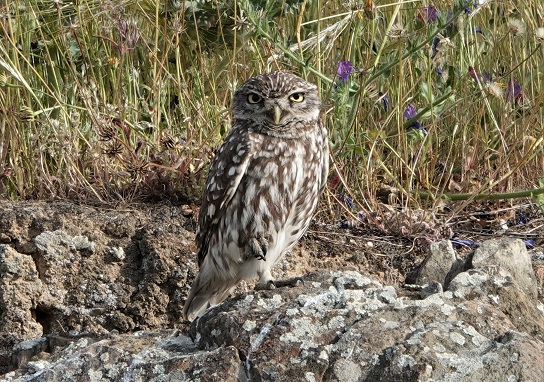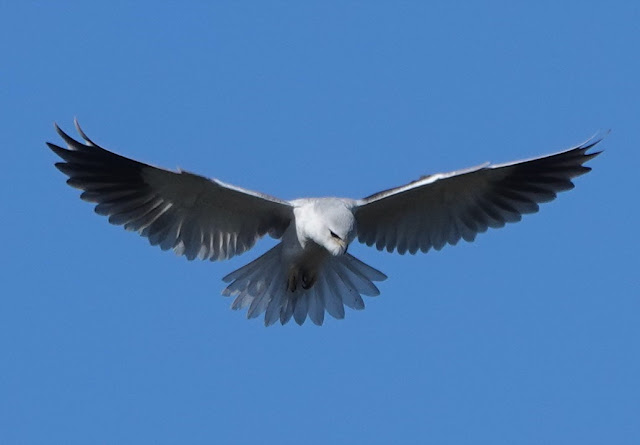The biggest of them all
 |
| Black Vulture (photo by Nigel Sprowell) |
The time of day was a clue to the bird's apparent inactivity. Being such huge and heavy birds, vultures are highly dependent on thermals during the day for gaining height in order to glide long distances, thus minimising the energy that they would need to expend flapping. My Black Vulture had probably been feeding on a sheep carcass nearby the previous afternoon, but as the winter's day drew to an end, the air temperature would have fallen quickly. Under such conditions, especially if it had been cloudy, it would have been hard for this bird to have gained enough height to set off back to its roosting area. Perhaps it had also gorged itself, adding additional payload. So it stayed put, standing on a rise on the ground, near some rocks and bivouacked there.
 |
| Black Vulture (John Hawkins) |
Black Vultures have a small global population (estimated by BirdLife International to be probably less than 10,000 pairs) which is decreasing, which makes the species officially considered to be Near-Threatened. In Spain however, and especially in Extremadura, the species is increasing in numbers. Government figures show that from just 86 known pairs in 1974, the breeding population in 2013 was 897 pairs in Extremadura alone, see this link to the Birds of Extremadura blog for more information. This makes our region home to the highest density of Black Vultures in the world and certainly the most important area for them in Europe. The Griffon Vulture population here has also grown during this period. I think that the main driving force for this is linked to what I describe in my early morning encounter above. There are several million sheep living on the plains of Extremadura. As my imagined shepherd turned out to be a vulture, the fact is that there are now far fewer shepherds accompanying the flocks than there used to be. This is in part because of the investment, thanks to available finance, that farmers have made in recent decades to fencing the land, enabling flocks of increasing size to forage unattended. Injured or sick animals die and their carcasses are found by vultures before the farmers do in these extensive range lands in Extremadura. Some farmers as well still cling onto the traditional approach of leaving the carcass when it fell, especially it lies in a remote and seldom-visited corner of their land. The vultures thrive here. Exciting as Monfragüe National Park is as one of the top concentrations of breeding vultures, where their nesting activity is now (in mid-February) well underway, my preferred landscape for watching vultures is without doubt the steppe-like plains. Here under the vast open skies I can watch a vulture cross from one horizon to the other, on perhaps a single glide, tracking a straight line. It passes low overhead as it does so, tilting its head to register me in its vision, perhaps for a mere second, whilst I in deference keep it in view until as a dot in the sky already kilometres away it disappears from mine.



Comments